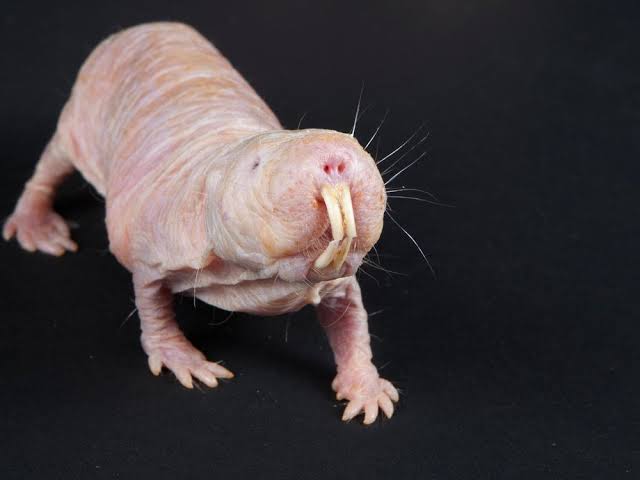
You can’t deny that you have been entranced by the looks of an animal at some point. Perhaps it was a brightly colored bird, a little ginger kitten, or an exotic butterfly. It was probably so visually appealing that its cuteness intruded on your pleasure centers and flicked them on nonchalantly, sending you into a momentary “high” without your consent. You just couldn’t help it. However, have you ever seen an animal so “aesthetically displeasing” that you subconsciously blurt, “What is that monstrosity?! Or your mind just screams “Boy, that is one ugly animal!“?
Yeah, me too.
All animals are built differently. It is a no-brainer. Even those who look similar have dissimilarities upon closer inspection. The unique demands of their environmental conditions and their long-standing interplay with the animal’s drive to thrive over the ages have played a significant role in this. It has progressively molded these organisms into what they are today – into how they look like. Of course, not every animal gets to be enchantingly attractive like the peacock, or cute like the koala, but there is no denying the fact that nature did some guys bad in the looks department. At least by human standards of attractiveness.
For what it is worth, their bizarre looks do not make them any less than the pretty ones. In fact, it makes them even better adapted to their environments, and more resourceful. Some of these flaws even help these animals lead better romantic lives than many of their human critics ever will😂. If you’re still curious (I know you are), read on to find out some of the most “aesthetically unpleasing” animals on the planet, and some salient facts about them.
- Blobfish
Take a look at the slimy, uncomely skin, the “frowny face”, and the body shape and it’s easy to figure out why they are on this list. In fact, for what it is worth, they are honorable members of this bizarre clan. The Ugly Animal Preservation Society voted the blobfish the ugliest animal in the world almost a decade back, and by implication, made them the face of all ugly animals. The fish has since then garnered more attention than before in the online space.
However, it’s noteworthy that the “monstrosity” you see up there doesn’t have it as bad as many think it does – at least, for the most part. Blobfishes only look this “ugly” when brought out of their habitat. In other words, the ugliness of the blobfish you see is the product of an unfamiliar environment’s effect on their unusual anatomy. Otherwise, they appear just like every other fish they are related to.
The blobfish, Psychrolutes marcidus is a marine fish that resides in the waters of the coasts of Australia and Tasmania, a few thousand feet deep. Blobfishes are quite small, as they seldom reach a foot in length. Because they reside so deep in these waters, they lack swim bladders – for good reason. Swim bladders are ineffective at maintaining buoyancy at these depths. Blobfishes are also devoid of a bony or cartilaginous skeleton. In essence, they are just sizable, unassuming masses of gelatinous bodies (with a little bit of muscle in the mix) barely floating above the ocean floor. Their diet consists mainly of little crustaceans that drift around at these depths.
- Naked Mole Rats
This naked, wrinkly sausage of a rodent with poorly defined eyes and bizarrely-protruded incisors is another honorable mention on this list. These rodents are also known as sand puppies. They are endemic to Kenya and parts of the Horn of Africa – Ethiopia, and Kenya. Naked mole rats are blind and are underground dwellers.
Beyond their obvious aesthetic deficits, they are quite intriguing animals. Firstly, they operate a eusocial system – something that we only commonly see in insects like bees and termites. There is a queen, one to three sexually active males and then the rest are sterile workers. Like in termites, queens are often larger than the others as well. In addition to eating foods like tubers, they also eat their feces. Naked mole rats also have low metabolic and respiratory rates, and they are very efficient users of oxygen.
They are also the only known cold-blooded mammals in existence.
Naked mole rats are a focal point of medical research – especially cancer-related and CVS-related genomic research. This is because of their unique physiology. They age very healthily and are resistant to cancer.
- Proboscis Monkey
It’s interesting how a disproportionately sized nose plummets you down the scale of good looks.
Proboscis monkeys are reddish-brown apes endemic to the islands of Borneo in Southeast Asia. They make this list because of their interestingly shaped, long bulbous noses. A male proboscis monkey’s nose length averages about four inches. Sometimes, it dangles even lower than the mouths of some males. What’s even more interesting than the shape is its purpose. It is for attracting mates.
While a man with a bulbous nose would have a hard time with the ladies, it’s the opposite for these monkeys. The larger your nose is, the more sexually attractive and virile you are. Typical proboscis monkey groups consist of a single male, multiple females, and their offspring. However, all-male bands are not uncommon. Moreover, loners are not a rare sight either. The proboscis monkey is an endangered species. This is due to recent habitat loss, and poaching. However, conservation efforts have been made to mitigate these.
- Vultures
When you think about the word “vulture”, “attractive” definitely isn’t one of the words that come to mind. Many species of vultures are as ugly as animals come. Their most aversive trait is usually their bald head/neck. The prominent brows that settle on their faces make them look even weirder. These traits, with their hunched, almost sinister poses, and the ragged, dully colored plumage (found in some), cements their status as ugly beasts for many folks. Because of their absurd diet of carcasses and corpses, they are quite smelly too – another discredit to their name.
However, some of these unappealing characteristics are not without good reason. An example is their bald heads and necks. It prevents bacteria and other pathogens from getting into their feathers when they feed and helps them regulate body temperature as well.
Although society has branded vultures with a dislikeable persona, they are very important parts of the ecosystem. They help clear up carcasses and prevent the growth and spread of infections in these areas. Therefore, beyond its repugnant look, the vulture is a resourceful, indispensable bird in its locale. It is a prime example that shows that relevance isn’t all about superficial looks.
Enjoyed this? Check out other wildlife-themed pieces here.



I saw the naked mole rat and immediately thought “Dermagorgon”.
And the proboscis monkey is actually kinda cute. 😂